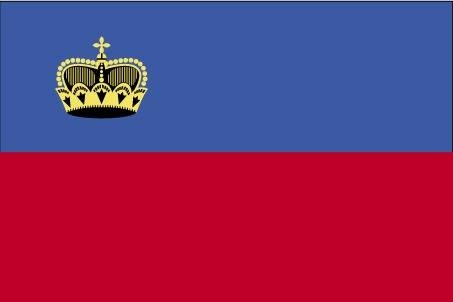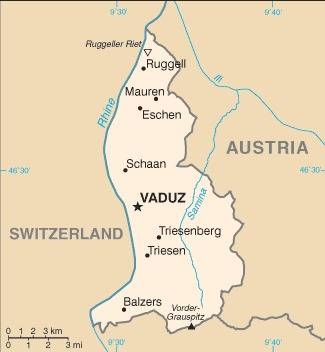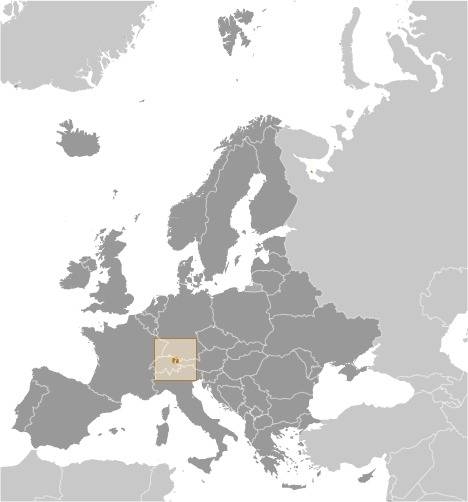Liechtenstein
Introduction
Background
The Principality of Liechtenstein was established within the Holy Roman Empire in 1719. Occupied by both French and Russian troops during the Napoleonic Wars, it became a sovereign state in 1806 and joined the German Confederation in 1815. Liechtenstein became fully independent in 1866 when the Confederation dissolved. Until the end of World War I, it was closely tied to Austria, but the economic devastation caused by that conflict forced Liechtenstein to enter into a customs and monetary union with Switzerland. Since World War II (in which Liechtenstein remained neutral), the country's low taxes have spurred outstanding economic growth. In 2000, shortcomings in banking regulatory oversight resulted in concerns about the use of financial institutions for money laundering. However, Liechtenstein implemented anti-money laundering legislation and a Mutual Legal Assistance Treaty with the US that went into effect in 2003.
Visit the Definitions and Notes page to view a description of each topic.
Geography
Location
Central Europe, between Austria and Switzerland
Geographic coordinates
47 16 N, 9 32 E
Map references
Europe
Area - comparative
about 0.9 times the size of Washington, DC
Land boundaries
total: 75 km
border countries (2): Austria 34 km; Switzerland 41 km
Coastline
0 km (doubly landlocked)
Maritime claims
none (landlocked)
Climate
continental; cold, cloudy winters with frequent snow or rain; cool to moderately warm, cloudy, humid summers
Terrain
mostly mountainous (Alps) with Rhine Valley in western third
Elevation
highest point: Vorder-Grauspitz 2,599 m
lowest point: Ruggeller Riet 430 m
Natural resources
hydroelectric potential, arable land
Land use
agricultural land: 37.6% (2018 est.)
arable land: 18.8% (2018 est.)
permanent crops: 0% (2018 est.)
permanent pasture: 18.8% (2018 est.)
forest: 43.1% (2018 est.)
other: 19.3% (2018 est.)
Irrigated land
0 sq km (2012)
Major watersheds (area sq km)
Atlantic Ocean drainage: Rhine-Maas (198,735 sq km)
Population distribution
most of the population is found in the western half of the country along the Rhine River
Natural hazards
avalanches, landslides
Geography - note
along with Uzbekistan, one of only two doubly landlocked countries in the world; variety of microclimatic variations based on elevation
People and Society
Population
39,711 (2022 est.)
note: immigrants make up 67% of the total population, according to UN data (2019)
Nationality
noun: Liechtensteiner(s)
adjective: Liechtenstein
Ethnic groups
Liechtensteiner 65.5%, Swiss 9.6%, Austrian 6%, German 4.5%, Italian 3.1%, other 11.4% (2020 est.)
note: data represent population by nationality
Languages
German 91.5% (official) (Alemannic is the main dialect), Italian 1.5%, Turkish 1.3%, Portuguese 1.1%, other 4.6% (2015 est.)
major-language sample(s):
Das World Factbook, die unverzichtbare Quelle für grundlegende Informationen. (German)
The World Factbook, the indispensable source for basic information.
Religions
Roman Catholic (official) 73.4%, Protestant Reformed 6.3%, Muslim 5.9%, Christian Orthodox 1.3%, Lutheran 1.2%, other Protestant 0.7%, other Christian 0.3%, other 0.8%, none 7%, unspecified 3.3% (2015 est.)
Age structure
0-14 years: 15.2% (male 3,259/female 2,688)
15-24 years: 11.29% (male 2,238/female 2,181)
25-54 years: 40.22% (male 7,869/female 7,872)
55-64 years: 14.41% (male 2,711/female 2,930)
65 years and over: 18.88% (male 3,403/female 3,986) (2020 est.)

Dependency ratios
total dependency ratio: 50.2
youth dependency ratio: 21.8
elderly dependency ratio: 28.3
potential support ratio: 3.5 (2021)
Median age
total: 43.7 years
male: 42 years
female: 45.3 years (2020 est.)
Population distribution
most of the population is found in the western half of the country along the Rhine River
Urbanization
urban population: 14.6% of total population (2023)
rate of urbanization: 1.15% annual rate of change (2020-25 est.)
Major urban areas - population
5,000 VADUZ (capital) (2018)
Sex ratio
at birth: 1.25 male(s)/female
0-14 years: 1.24 male(s)/female
15-24 years: 1.04 male(s)/female
25-54 years: 1 male(s)/female
55-64 years: 0.92 male(s)/female
65 years and over: 0.69 male(s)/female
total population: 0.99 male(s)/female (2022 est.)
Mother's mean age at first birth
31.3 years (2017)
Infant mortality rate
total: 4.05 deaths/1,000 live births
male: 4.41 deaths/1,000 live births
female: 3.59 deaths/1,000 live births (2022 est.)
Life expectancy at birth
total population: 82.56 years
male: 80.33 years
female: 85.38 years (2022 est.)
Drinking water source
improved: urban: NA
rural: NA
total: 100% of population
unimproved: urban: NA
rural: NA
total: 0% of population (2020)
Sanitation facility access
improved: urban: NA
rural: NA
total: 100% of population
unimproved: urban: NA
rural: NA
total: 0% of population (2020)
Literacy
total population: NA
male: NA
female: NA
School life expectancy (primary to tertiary education)
total: 15 years
male: 16 years
female: 14 years (2020)
Environment
Environment - current issues
some air pollution generated locally, some carried over from surrounding countries
Environment - international agreements
party to: Air Pollution, Air Pollution-Heavy Metals, Air Pollution-Nitrogen Oxides, Air Pollution-Persistent Organic Pollutants, Air Pollution-Sulphur 85, Air Pollution-Sulphur 94, Air Pollution-Volatile Organic Compounds, Biodiversity, Climate Change, Climate Change-Kyoto Protocol, Climate Change-Paris Agreement, Comprehensive Nuclear Test Ban, Desertification, Endangered Species, Hazardous Wastes, Ozone Layer Protection, Wetlands
signed, but not ratified: Air Pollution-Multi-effect Protocol, Law of the Sea
Air pollutants
carbon dioxide emissions: 0.05 megatons (2016 est.)
methane emissions: 0.02 megatons (2020 est.)
Climate
continental; cold, cloudy winters with frequent snow or rain; cool to moderately warm, cloudy, humid summers
Land use
agricultural land: 37.6% (2018 est.)
arable land: 18.8% (2018 est.)
permanent crops: 0% (2018 est.)
permanent pasture: 18.8% (2018 est.)
forest: 43.1% (2018 est.)
other: 19.3% (2018 est.)
Urbanization
urban population: 14.6% of total population (2023)
rate of urbanization: 1.15% annual rate of change (2020-25 est.)
Revenue from forest resources
forest revenues: 0% of GDP (2017 est.)
country comparison to the world: 181Waste and recycling
municipal solid waste generated annually: 32,382 tons (2015 est.)
municipal solid waste recycled annually: 20,919 tons (2015 est.)
percent of municipal solid waste recycled: 64.6% (2015 est.)
Major watersheds (area sq km)
Atlantic Ocean drainage: Rhine-Maas (198,735 sq km)
Total water withdrawal
municipal: 7.9 million cubic meters (2017 est.)
Total renewable water resources
0 cubic meters (2017 est.)
Government
Country name
conventional long form: Principality of Liechtenstein
conventional short form: Liechtenstein
local long form: Fuerstentum Liechtenstein
local short form: Liechtenstein
etymology: named after the Liechtenstein dynasty that purchased and united the counties of Schellenburg and Vaduz and that was allowed by the Holy Roman Emperor in 1719 to rename the new property after their family; the name in German means "light (bright) stone"
Government type
constitutional monarchy
Capital
name: Vaduz
geographic coordinates: 47 08 N, 9 31 E
time difference: UTC+1 (6 hours ahead of Washington, DC, during Standard Time)
daylight saving time: +1hr, begins last Sunday in March; ends last Sunday in October
etymology: may be a conflation from the Latin vallis (valley) and the High German diutisk (meaning "German") to produce Valdutsch ("German valley"), which over time simplified and came to refer specifically to Vaduz, the town
Administrative divisions
11 communes (Gemeinden, singular - Gemeinde); Balzers, Eschen, Gamprin, Mauren, Planken, Ruggell, Schaan, Schellenberg, Triesen, Triesenberg, Vaduz
Independence
23 January 1719 (Principality of Liechtenstein established); 12 July 1806 (independence from the Holy Roman Empire); 24 August 1866 (independence from the German Confederation)
National holiday
National Day, 15 August (1940); note - a National Day was originally established in 1940 to combine celebrations for the Feast of the Assumption (15 August) with those honoring the birthday of former Prince FRANZ JOSEF II (1906-1989) whose birth fell on 16 August; after the prince's death, National Day became the official national holiday by law in 1990
Constitution
history: previous 1862; latest adopted 5 October 1921
amendments: proposed by Parliament, by the reigning prince (in the form of "Government" proposals), by petition of at least 1,500 qualified voters, or by at least four communes; passage requires unanimous approval of Parliament members in one sitting or three-quarters majority vote in two successive sittings; referendum required only if petitioned by at least 1,500 voters or by at least four communes; passage by referendum requires absolute majority of votes cast; amended many times, last in 2020
Legal system
civil law system influenced by Swiss, Austrian, and German law
International law organization participation
accepts compulsory ICJ jurisdiction with reservations; accepts ICCt jurisdiction
Citizenship
citizenship by birth: no
citizenship by descent only: the father must be a citizen of Liechtenstein; in the case of a child born out of wedlock, the mother must be a citizen
dual citizenship recognized: no
residency requirement for naturalization: 5 years
Suffrage
18 years of age; universal
Executive branch
chief of state: Prince HANS-ADAM II (since 13 November 1989, assumed executive powers on 26 August 1984); Heir Apparent and Regent of Liechtenstein Prince ALOIS (son of the monarch, born 11 June 1968); note - 15 August 2004, HANS-ADAM II transferred the official duties of the ruling prince to ALOIS, but HANS-ADAM II retains status of chief of state
head of government: Prime Minister Daniel RISCH; Deputy Prime Minister Sabine MONAUNI (both since 25 March 2021)
cabinet: Cabinet elected by the Parliament, confirmed by the monarch
elections/appointments: the monarchy is hereditary; following legislative elections, the leader of the majority party in the Parliament usually appointed the head of government by the monarch, and the leader of the largest minority party in the Landtag usually appointed the deputy head of government by the monarch if there is a coalition government
Legislative branch
description: unicameral Parliament or Landtag (25 seats; members directly elected in 2 multi-seat constituencies by open-list proportional representation vote to serve 4-year terms)
elections: last held on 7 February 2021 (next to be held on 7 February 2025)
election results: percent of vote by party - FBP 40%, VU 40%, FL 12%, DpL 8%; seats by party - FBP 10, VU 10, FL 3, DpL 2; composition - men 18, women 7, percent of women 28%
Judicial branch
highest court(s): Supreme Court or Oberster Gerichtshof (consists of 5 judges); Constitutional Court or Verfassungsgericht (consists of 5 judges and 5 alternates)
judge selection and term of office: judges of both courts elected by the Landtag and appointed by the monarch; Supreme Court judges serve 4-year renewable terms; Constitutional Court judges appointed for renewable 5-year terms
subordinate courts: Court of Appeal or Obergericht (second instance), Court of Justice (first instance), Administrative Court, county courts
Political parties and leaders
Democrats for Liechtenstein (Demokraten pro Liechtenstein) or DpL [Thomas REHAK]
Fatherland Union (Vaterlaendische Union) or VU [Guenther FRITZ]
Progressive Citizens' Party (Fortschrittliche Buergerpartei) or FBP [Thomas BANZER]
The Free List (Die Freie Liste) or FL [Pepo FRICK and Conny BUECHEL BRUEHWILER]
The Independents (Die Unabhaengigen) or DU [Harald "Harry" QUADERER]
International organization participation
CD, CE, EBRD, EFTA, IAEA, ICCt, ICRM, IFRCS, Interpol, IOC, IPU, ITSO, ITU, ITUC (NGOs), OAS (observer), OPCW, OSCE, PCA, Schengen Convention, UN, UNCTAD, UPU, WIPO, WTO
Diplomatic representation in the US
chief of mission: Ambassador Georg SPARBER (since 1 December 2021)
chancery: 2900 K Street NW, Suite 602B, Washington, DC 20007
telephone: [1] (202) 331-0590
FAX: [1] (202) 331-3221
email address and website:
info@embassyli.org
https://www.liechtensteinusa.org/
Diplomatic representation from the US
embassy: the US does not have an embassy in Liechtenstein; the US Ambassador to Switzerland is accredited to Liechtenstein
Flag description
two equal horizontal bands of blue (top) and red with a gold crown on the hoist side of the blue band; the colors may derive from the blue and red livery design used in the principality's household in the 18th century; the prince's crown was introduced in 1937 to distinguish the flag from that of Haiti
National symbol(s)
princely hat (crown); national colors: blue, red
National anthem
name: "Oben am jungen Rhein" (High Above the Young Rhine)
lyrics/music: Jakob Joseph JAUCH/Josef FROMMELT
note: adopted 1850, revised 1963; uses the tune of "God Save the King"
Economy
Economic overview
Despite its small size and lack of natural resources, Liechtenstein has developed into a prosperous, highly industrialized, free-enterprise economy with a vital financial services sector and one of the highest per capita income levels in the world. The Liechtenstein economy is widely diversified with a large number of small and medium-sized businesses, particularly in the services sector. Low business taxes - a flat tax of 12.5% on income is applied - and easy incorporation rules have induced many holding companies to establish nominal offices in Liechtenstein, providing 30% of state revenues.
The country participates in a customs union with Switzerland and uses the Swiss franc as its national currency. It imports more than 90% of its energy requirements. Liechtenstein has been a member of the European Economic Area (an organization serving as a bridge between the European Free Trade Association and the EU) since May 1995. The government is working to harmonize its economic policies with those of an integrated EU. As of 2015, 54% of Liechtenstein’s workforce consisted of cross-border commuters, largely from Austria, Germany, and Switzerland.
Since 2008, Liechtenstein has faced renewed international pressure - particularly from Germany and the US - to improve transparency in its banking and tax systems. In December 2008, Liechtenstein signed a Tax Information Exchange Agreement with the US. Upon Liechtenstein's conclusion of 12 bilateral information-sharing agreements, the OECD in October 2009 removed the principality from its "grey list" of countries that had yet to implement the organization's Model Tax Convention. By the end of 2010, Liechtenstein had signed 25 Tax Information Exchange Agreements or Double Tax Agreements. In 2011, Liechtenstein joined the Schengen area, which allows passport-free travel across 26 European countries. In 2015, Liechtenstein and the EU agreed to clamp down on tax fraud and evasion and in 2018 will start automatically exchanging information on the bank accounts of each other’s residents.
Real GDP (purchasing power parity)
$4.978 billion (2014 est.)
$3.2 billion (2009 est.)
$3.216 billion (2008 est.)
Real GDP growth rate
1.8% (2012 est.)
-0.5% (2011 est.)
3.1% (2007 est.)
Real GDP per capita
$139,100 (2009 est.)
$90,100 (2008 est.)
$91,300 (2007 est.)
GDP (official exchange rate)
$6.672 billion (2014 est.)
Credit ratings
Standard & Poors rating: AAA (1996)
note: The year refers to the year in which the current credit rating was first obtained.
GDP - composition, by sector of origin
agriculture: 7% (2014)
industry: 41% (2014)
services: 52% (2014)
Agricultural products
wheat, barley, corn, potatoes; livestock, dairy products
Industries
electronics, metal manufacturing, dental products, ceramics, pharmaceuticals, food products, precision instruments, tourism, optical instruments
Labor force
38,520 (2015 est.) (2012)
note: 51% of the labor force in Liechtenstein commute daily from Austria, Switzerland, and Germany
Labor force - by occupation
agriculture: 0.8%
industry: 36.9%
services: 62.3% (2015)
Household income or consumption by percentage share
lowest 10%: NA
highest 10%: NA
Budget
revenues: 995.3 million (2012 est.)
expenditures: 890.4 million (2011 est.)
Fiscal year
calendar year
Exports
$3.217 billion (2015 est.)
$3.774 billion (2014 est.)
note: trade data exclude trade with Switzerland
Exports - commodities
small specialty machinery, connectors for audio and video, parts for motor vehicles, dental products, hardware, prepared foodstuffs, electronic equipment, optical products
Imports
$2.23 billion (2014 est.)
note: trade data exclude trade with Switzerland
Imports - commodities
agricultural products, raw materials, energy products, machinery, metal goods, textiles, foodstuffs, motor vehicles
Debt - external
$0 (2015 est.)
note: public external debt only; private external debt unavailable
Exchange rates
Swiss francs (CHF) per US dollar -
0.9875 (2017 est.)
0.9852 (2016 est.)
0.9852 (2015 est.)
0.9627 (2014 est.)
0.9152 (2013 est.)
Energy
Electricity access
electrification - total population: 100% (2020)
Communications
Telephones - fixed lines
total subscriptions: 12,607 (2020 est.)
subscriptions per 100 inhabitants: 33 (2020 est.)
Telephones - mobile cellular
total subscriptions: 48,887 (2020 est.)
subscriptions per 100 inhabitants: 128 (2020 est.)
Telecommunication systems
general assessment: automatic telephone system; 44 Internet service providers in Liechtenstein and Switzerland combined; FttP (fiber to the home) penetration marketed 3rd highest in EU; fiber network reaches 3/4 of the population (2020)
domestic: fixed-line roughly 33 per 100 and mobile-cellular services 128 per 100 (2020)
international: country code - 423; linked to Swiss networks by cable and microwave radio relay
note: the COVID-19 pandemic continues to have a significant impact on production and supply chains globally; since 2020, some aspects of the telecom sector have experienced a downturn, particularly in mobile device production; progress toward 5G implementation has resumed, as well as upgrades to infrastructure; consumer spending on telecom services has increased due to the surge in demand for capacity and bandwidth; the crucial nature of telecom services as a tool for work and school from home is still evident, and the spike in this area has seen growth opportunities for development of new tools and increased services
Broadcast media
relies on foreign terrestrial and satellite broadcasters for most broadcast media services; first Liechtenstein-based TV station established August 2008; Radio Liechtenstein operates multiple radio stations; a Swiss-based broadcaster operates one radio station in Liechtenstein
Internet users
total: 37,260 (2019 est.)
percent of population: 98% (2019 est.)
Broadband - fixed subscriptions
total: 18,050 (2020 est.)
subscriptions per 100 inhabitants: 47 (2020 est.)
Transportation
Pipelines
434.5 km gas (2018)
Railways
total: 9 km (2018)
standard gauge: 9 km (2018) 1.435-m gauge (electrified)
note: belongs to the Austrian Railway System connecting Austria and Switzerland
Merchant marine
total: 20
by type: bulk carrier 16, general cargo 1, other 3 (includes Switzerland) (2021)
Military and Security
Military and security forces
no regular military forces; the National Police is responsible for all matters relating to the safety and security of Liechtenstein
Transnational Issues
Illicit drugs
has strengthened money laundering controls, but money laundering remains a concern due to Liechtenstein's sophisticated offshore financial services sector



